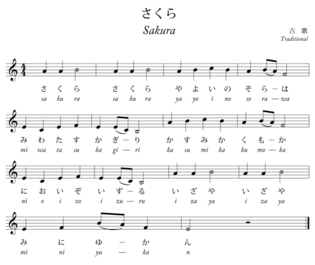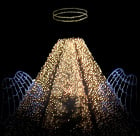
- Sakura Sakura
- Released in: 1969
“Sakura Sakura” is an ode to Japan’s most beloved flower, the cherry blossom (sakura). Contrary to general belief, this song is not so ancient, since it “only” dates from the Edo period (1603-1867).

“Sakura Sakura” is an ode to Japan’s most beloved flower, the cherry blossom (sakura). Contrary to general belief, this song is not so ancient, since it “only” dates from the Edo period (1603-1867).

“Sakura Sakura” (さくら さくら), also known simply as “Sakura,” is an ode to Japan’s most beloved flower, the cherry blossom (sakura). Contrary to general belief, this song is not so ancient, since it “only” dates from the Edo period (1603-1867). It was first intended to be played with a shakuhachi, a Japanese bamboo flute. In 1888, it was included in a manual by the Tokyo Academy of Music for the study of the koto, a traditional Japanese stringed instrument, whose melodious sounds evoke Western harps. The song really gained recognition in the Meiji period (1869-1912) and the lyrics, as we know them now, were added during that time. “Sakura Sakura” has become so successful that it is often played abroad whenever a Japanese song is needed. It is even selected more often than the actual Japanese national anthem, “Kimigayo,” one of the world’s oldest and shortest anthems. In France, “Sakura Sakura” was used for many years as a soundtrack for the TV commercials of a popular cosmetics brand. Therefore, it became a very well-known melody among French audiences, even if many did not know its origins.
“Sakura Sakura” has a brief melody with a limited range of sounds. Yet, it is moving and highly evocative of the atmosphere of early spring, when Japanese cherry trees, which don’t have fruits, blossom for a short period of time and produce white and pink clouds that quickly evaporate, as implied in the song. The Japanese have words for the different stages of the blossoming, and many people prefer the moment when the flower is just starting to stick out its head. They consider this to be a more subtle and delicate example of beauty than the splendid but more spectacular full bloom, here suggested by the expression “hana zakari.” The sakura have a wonderful but also transient beauty, and since they are in full bloom for only a few days, they perfectly symbolize the ephemerality of life. This concept of impermanence is very important to Japanese culture. The country has had to cope with regular and violent manifestations of the forces of nature and its population has adopted Buddhism, imported from India via China and Korea. Sakura are such strong symbols that, during World War II, the government encouraged the belief that the souls of downed warriors reincarnated in cherry blossoms, and kamikaze aviators even painted the cherry flowers on their planes.
The Japanese have the habit of going to hanami (literally, “flower viewings”) during springtime, in order to admire the blossoms of seasonal flowers, first the plum trees and then the sakura, by far the most popular. Sakura usually blossom in late March or early April, and the “blossom front” advancing through Japan is feverishly followed on television. The Japanese love to stroll or picnic under the trees and, during the period coinciding with the new fiscal year, hanami parties are usually an occasion for new employees to integrate themselves into the company. These buoyant picnics are quite distant from the melancholic feelings traditionally associated with sakura. The song reminds us that the custom goes back very far in Japanese culture, farther in fact than the writing of “Sakura Sakura.”
Even if cherry blossoms are delightful for the eyes, one must add that, contrary to what is said in the song and in many cosmetics advertisements, most sakura species have almost no fragrance. Indeed, plum trees have a much more agreeable and characteristic perfume. Yet, “Sakura Sakura” poetically draws the image of a coloured and fragrant mist, vibrant in the morning sun (asahi), referencing another important symbol of a country known as the Land of the Rising Sun!